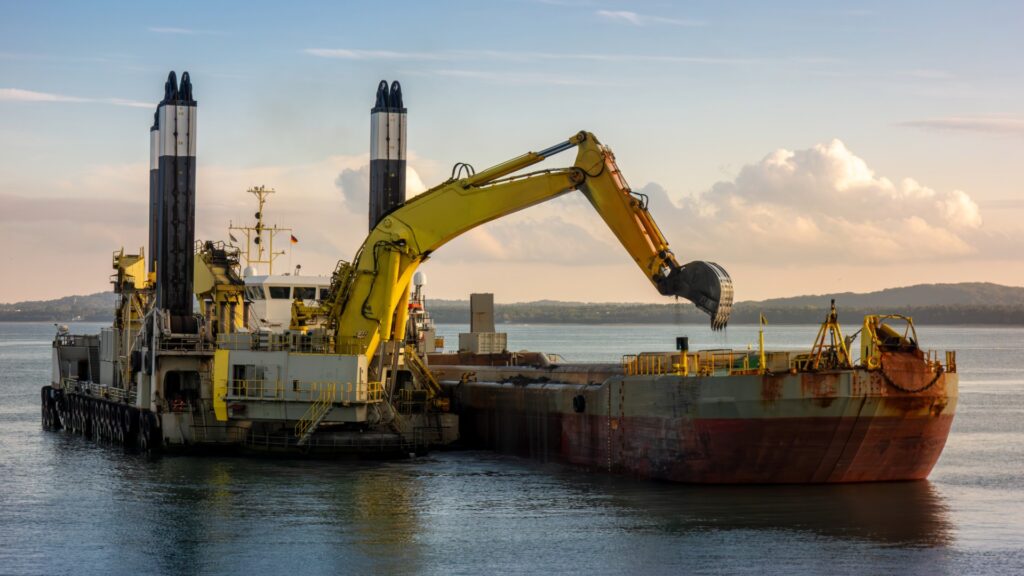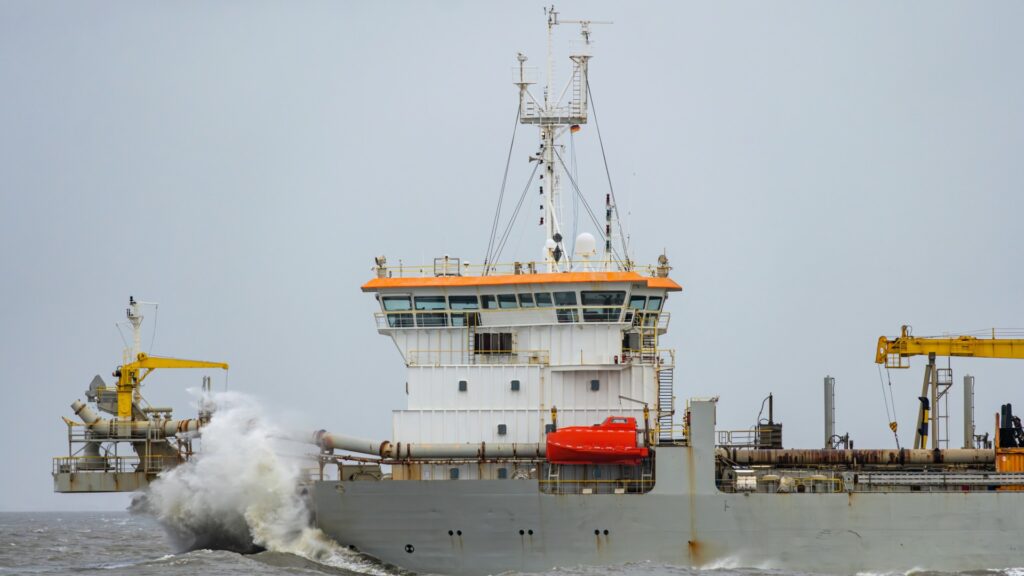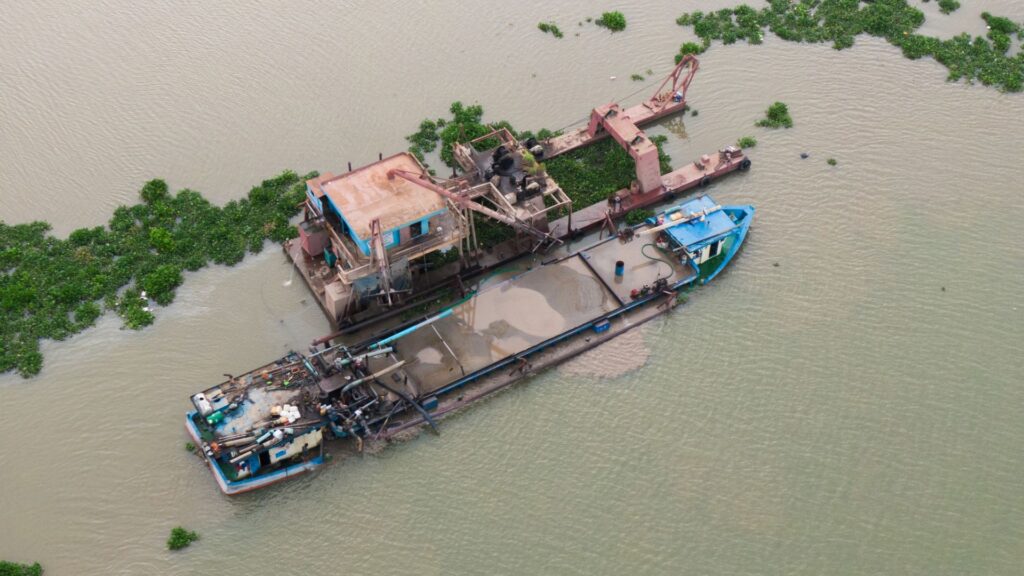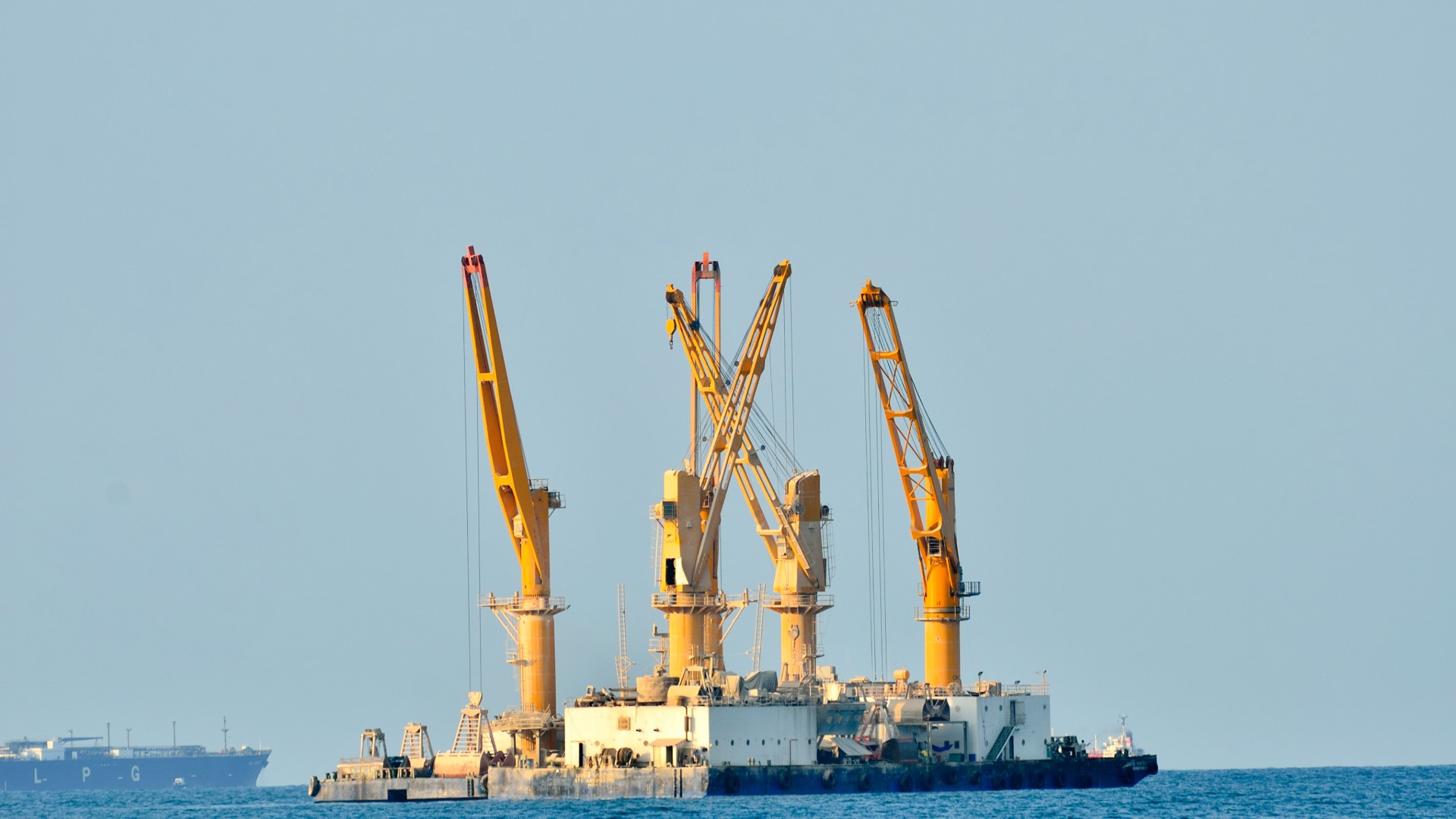Waterway dredging is a necessary infrastructure activity that ensures rivers, canals, ports, and coastal channels remain navigable and resilient to modern industry demands. By systematically removing accumulated sediment and debris, waterway dredging improves safe vessel passage, reduces flood risks, and safeguards the operational continuity of ports and inland transport routes. Across industries, whether for naval installations, municipal waterways, or large commercial harbours, dredging waterways plays a crucial role in enhancing trade efficiency, ensuring security readiness, and fostering long-term community resilience.
For procurement heads and project contractors, dredging waterways is more than a maintenance procedure; it represents a strategic investment in operational performance and cost management. Choosing the right equipment and modern sea dredge solutions not only influences the accuracy of channel clearance but also yields downstream benefits, including reduced fuel use, minimized downtime, and compliance with regulatory standards.
Government buyers and defence agencies emphasize the value of sea dredge projects in keeping naval channels clear and safeguarding critical maritime infrastructure. At the same time, commercial ports depend on dredging waterways to expand capacity and accommodate larger vessels, while offshore industries rely on sea dredge operations to secure reliable deepwater access routes.
When carried out with precision, technology, and sustainability in mind, waterway dredging extends the service life of harbors, ensures reliable shipping access, and lowers emergency spending on channel restoration. By investing in continuous improvement and advanced sea dredge capabilities, industries can future-proof their waterways and strengthen global connectivity.

What is Waterway Dredging?
Waterway dredging refers to the planned excavation and removal of residues, mud, and debris that naturally accumulate in rivers, lakes, harbours, and canals. Without regular intervention, these deposits restrict water depth, limit vessel access, and increase the risk of flooding. By maintaining or restoring channel depth, waterway dredging ensures that commercial shipping, naval fleets, and municipal transport systems can operate without disruption.
The practice plays an important role across multiple sectors. For ports and terminals, dredging waterways keeps trade routes open for larger vessels, directly influencing cargo throughput and port revenues. In urban environments, it enhances drainage capacity and reduces the likelihood of costly flood events. For the energy, mining, and oil and gas industries, reliable dredged channels allow for uninterrupted supply chain operations and access to offshore facilities.
Sea dredge operations further extend this scope to offshore environments, where maintaining deepwater access is critical for both naval readiness and resource industries. Whether applied inland or offshore, waterway dredging provides strategic value by combining navigational safety with cost-efficient asset management, delivering returns far beyond initial project expenditures.
Techniques of Waterway Dredging
Different techniques of waterway dredging have been developed to meet the diverse needs of ports, municipalities, and industrial projects. The optimal dredging method is determined by site-specific conditions, project scope, and environmental considerations, thereby maximizing the efficiency and effectiveness of channel maintenance or deepening operations.
Mechanical dredging utilizes equipment like clamshell buckets, draglines, or backhoes to extract compacted sediments and debris physically. This method is ideal for confined spaces, areas near infrastructure, or projects that require precise excavation. It is often the preferred choice for procurement teams when stability, control, and minimal over-dredging are crucial.
Hydraulic dredging is the dominant choice for large-scale operations. Cutter suction dredgers (CSDs) and trailing suction hopper dredgers (TSHDs) transport sediment as slurry through pipelines, enabling continuous removal across wide areas. This makes hydraulic dredging of waterways cost-effective for deepening harbours, maintaining busy shipping channels, and preparing offshore zones.
In addition, hybrid and specialized techniques such as water injection, pneumatic, auger, and environmental dredging provide tailored solutions. For example, water injection dredges fluidize sediments for maintenance tasks, while environmental dredges enable the safe removal of sediments from contaminated zones. These specialized tools are increasingly used in sea dredge projects where environmental compliance and precision matter as much as productivity.
By carefully selecting dredging methods that align with specific project requirements, decision-makers can achieve optimal capital expenditure and enhanced lifecycle performance. This strategic approach transforms waterway dredging into a critical factor for ensuring the long-term reliability of infrastructure.

Equipment Used in Dredging Waterways
The scope and efficiency of waterway dredging depend heavily on the equipment selected. Different dredgers and support systems are designed to address specific sediment types, project conditions, and operational challenges. Procurement leaders, contractors, and government buyers must understand the capabilities of each type of dredging equipment to align investments with long-term ROI and project sustainability.
Mechanical Dredgers: Precision Tools for Confined Areas
Mechanical dredgers are among the oldest and most reliable systems for dredging waterways. These include clamshell dredgers, backhoe dredgers, and grab dredgers. Each works by physically excavating sediment and lifting it onto barges for disposal.
- Clamshell dredgers are ideal for harbors, ports, and confined spaces where precision matters. They handle rocky or compacted materials that hydraulic dredgers struggle with.
- Backhoe dredgers, mounted on pontoons, operate with excavator arms and are highly effective in shallow waters and areas requiring structured excavation.
- Grab dredgers offer a flexible option for maintenance work in unpredictable sediment conditions.
For municipalities or naval bases with space limitations, mechanical systems are often the first choice for waterway dredging projects because they strike a balance between accuracy and operational control.
Hydraulic Dredgers: Efficiency for Large-Scale Operations
Hydraulic dredgers dominate large-scale sea dredging and port deepening projects. These systems utilize suction and pumping mechanisms to transport sediment in a slurry form, either to disposal sites or land reclamation zones.
- Cutter Suction Dredgers (CSDs) use a rotating cutter head to loosen dense soils before suction. They are indispensable in projects that need channel deepening, pipeline trenching, and the removal of compacted sediments.
- Trailing Suction Hopper Dredgers (TSHDs) are self-propelled vessels with onboard hoppers, designed for open-water projects such as harbour maintenance, navigation channel deepening, and coastal nourishment. TSHDs are often chosen for dredging waterways along international shipping routes where uninterrupted operations are critical.
The scalability and efficiency of hydraulic dredgers make them essential to modern infrastructure development, ensuring that ports and shipping channels stay globally competitive.
Specialty Dredging Equipment: Addressing Complex Challenges
Modern waterway dredging generally needs equipment that goes beyond conventional methods, particularly in environmentally sensitive or logistically complex areas.
- Amphibious dredgers operate on both land and water, making them ideal for wetlands, swamps, and flood-prone urban waterways. Their adaptability ensures continuous operations despite shifting environments.
- Auger dredgers are specialized for removing contaminated sediment. Their slow, controlled cutting action minimizes turbidity, protecting surrounding ecosystems.
- Environmental buckets (sealed clamshells) reduce sediment spill, a vital feature for dredging in ports and rivers where environmental compliance is a concern.
By integrating specialty machines into project planning, contractors can meet sustainability standards while maintaining productivity.
Support Equipment and Infrastructure
No waterway dredging project functions without strong support systems. Booster pumps extend dredging distances, while floating pipelines transport slurry to disposal or reclamation sites. Positioning equipment such as spuds, anchors, and winches provides stability to dredgers, particularly in offshore sea dredge applications.
Equally important are survey vessels and hydrographic monitoring systems. Real-time mapping help operators to accurately measure dredge depth and adjust excavation paths, thereby reducing fuel consumption and ensuring compliance with contractual specifications.
Technological Advances: Automation and Monitoring
The latest generation of dredging equipment integrates automation and digital monitoring. GPS-guided systems enable dredgers to follow precise excavation grids, while real-time sonar and LiDAR imaging enhance accuracy in dredging waterway projects. Energy-efficient engines, fuel monitoring, and remote operation capabilities further reduce lifecycle costs.
For procurement leaders, these systems offer a compelling return on investment in dredging projects. They achieve this through reduced fuel consumption, optimized manpower, and fewer human-error-related delays, which transforms modern equipment into a significant financial and technical upgrade.
Procurement Considerations
When selecting dredging equipment, buyers must evaluate:
- Sediment type and density – Hard clays or rocky materials demand mechanical dredgers, while sandy or silty areas favour hydraulic solutions.
- Project scale – Large coastal or sea dredge projects require TSHDs, whereas small municipal waterways benefit from backhoe or amphibious dredgers.
- Environmental impact – Compliance with regulations often necessitates the use of specialized, low-turbidity equipment.
- Lifecycle cost vs. upfront cost – While advanced systems may require higher capital investment, their efficiency and lower operating expenses deliver better long-term returns.
Environmental and Regulatory Considerations
While the technical focus of waterway dredging is on improving navigation, efficiency, and access, every project also operates under strict environmental and regulatory frameworks. Governments, ports, and contractors must carefully balance project execution with ecosystem preservation, water quality management, and compliance requirements to ensure a sustainable approach. For procurement heads and infrastructure decision-makers, understanding the regulatory dimension of dredging waterways is just as important as selecting the right equipment.
Sediment Management and Disposal
One of the main challenges in waterway dredging is the safe handling and disposal of dredged materials. Sediments may comprise industrial pollutants, heavy metals, or organic contaminants that cannot simply be released back into the water system. Regulatory guidelines typically require:
- Sediment testing and classification before dredging begins.
- Confined disposal facilities (CDFs) for contaminated material.
- Beneficial reuse programs, where clean dredged sediment supports beach nourishment, wetland restoration, or land reclamation.
Such practices not only meet environmental requirements but also transform dredging into a resource recovery opportunity.
Water Quality and Turbidity Control
Excessive turbidity is a concern during sea dredge operations, where sediment plumes can affect marine life and disrupt fishing or aquaculture industries. Regulators enforce turbidity limits, requiring contractors to:
- Use environmental clamshell buckets to reduce sediment spills.
- Deploy silt curtains around dredging zones.
- Implement real-time water monitoring systems to track suspended solids in the water.
For government buyers and port authorities, these measures reduce the risk of penalties while preserving community trust in the project.
Ecosystem Protection
Waterway dredging often intersects with sensitive habitats such as wetlands, coral reefs, or estuaries. Procurement frameworks increasingly require environmental impact assessments (EIAs) before project approval. Key safeguards include:
- Seasonal restrictions on dredging to protect fish spawning and migratory bird activity.
- Habitat relocation programs, such as transplanting corals or aquatic vegetation.
- Low-noise dredging equipment to minimize disturbance to marine mammals.
By aligning with these standards, projects avoid costly legal disputes and maintain compliance with biodiversity protection regulations.
Regulatory Compliance and Permitting
In most jurisdictions, dredging contractors are required to obtain multiple permits from environmental agencies, maritime authorities, and local governments. The process includes:
- Baseline environmental surveys to establish existing conditions.
- Public consultation processes for community engagement.
- Detailed project reporting on sediment volumes, dredge methods, and disposal strategies.
Failure to comply can result in fines, delays, or the suspension of the project. For procurement leaders, ensuring contractors have experience navigating regulatory processes is crucial to risk management.
Sustainable Practices and Green Innovation
Increasingly, regulators and funding bodies demand that the dredging of waterways adopt sustainable approaches. Innovations include:
- Eco-friendly dredgers powered by hybrid or LNG engines.
- Adaptive management systems that adjust dredging intensity based on real-time ecological feedback.
- Carbon offset initiatives, where dredging projects contribute to environmental restoration to balance emissions.
Such practices not only enhance compliance but also show social responsibility, an important factor for municipalities, naval authorities, and global port operators.

Economic and Strategic Value of Waterway Dredging
For procurement heads, project contractors, and government buyers, the true measure of success in waterway dredging lies in its economic and strategic outcomes. Beyond the physical removal of sediment, dredging projects generate long-term value by enhancing operational efficiency, reducing maintenance costs, and ensuring resilient infrastructure that supports both commercial and defence objectives.
ROI Through Improved Navigability
Every year, global ports lose revenue due to draft restrictions that prevent larger vessels from docking. Waterway dredging eliminates these bottlenecks, enabling ports to accommodate modern container ships, bulk carriers, and naval fleets. By dredging waterways, port authorities can increase cargo throughput, attract new shipping lines, and avoid costly vessel delays. For municipalities, improved navigability translates into stronger regional trade and greater economic competitiveness.
Cost Savings in Infrastructure and Maintenance
Unmanaged sediment accumulation accelerates wear on port facilities, locks, and pumping stations, leading to unplanned maintenance and higher operating costs. A proactive investment in waterway dredging lowers these risks. For example, dredging around cooling water intakes in oil and gas refineries safeguards system blockages, while maintaining depth in mining corridors ensures uninterrupted material transport. These preventive measures reduce long-term capital expenditures and strengthen asset lifecycle value.
Strategic Security and Defense Benefits
For naval bases and coast guard facilities, sea dredge operations are not optional, they are mission-critical. Adequate water depth ensures the rapid deployment of military vessels and reliable access for supply and logistics fleets. Regular waterway dredging also reduces vulnerability by keeping strategic waterways open in times of conflict or emergency. In this way, dredging is as much a national security investment as it is an infrastructure function.
Enabling Coastal and Inland Development
Large-scale dredging of waterways projects enables new economic opportunities by supporting coastal development, tourism, and land reclamation. Reclaimed land can be repurposed for housing, commercial zones, or industrial facilities, thereby generating tax revenue and creating employment opportunities. Inland, dredging maintains the reliability of rivers and canals that supply agricultural irrigation, hydropower, and municipal water systems, creating a ripple effect of economic stability.
Long-Term Competitiveness and Resilience
Waterway dredging serves as a crucial resilience strategy in an era marked by climate change and rising sea levels. By deepening channels and reinforcing flood defenses, both governments and industries can mitigate potential economic disruptions caused by extreme weather. This proactive measure not only safeguards existing infrastructure but also ensures the capacity for future expansion in global trade and industrial activities.
Future Outlook and Innovations in Waterway Dredging
The future of waterway dredging is being shaped by automation, sustainability, and digital monitoring systems. As global ports expand and offshore industries rely on reliable access, demand for efficient and environmentally responsible dredging solutions is expected to continue growing.
Automation and Digitalization
Advances in GPS-guided dredgers, AI monitoring, and real-time hydrographic mapping are improving accuracy and lowering project costs. These tools enable contractors to complete dredging waterway projects more efficiently, while providing procurement heads with enhanced cost control and performance data.
Eco-Friendly Equipment
Modern equipment manufacturers are developing sea dredge vessels powered by hybrid or LNG engines, along with cutter systems that reduce turbidity. These eco-focused designs enable ports, municipalities, and defense projects to align with stricter environmental regulations while enhancing public trust.
Flexible and Sustainable Practices
Future waterway dredging projects will increasingly rely on modular dredgers that can be adapted for multiple tasks, thereby reducing capital investment. At the same time, real-time water quality sensors and predictive analytics will enable more proactive compliance, helping projects avoid costly environmental penalties.
Overall, the industry is moving toward solutions that deliver both operational efficiency and environmental responsibility, ensuring that waterway dredging remains a strategic enabler of trade, defense, and industrial growth.

Redefining Waterway Dredging for Generations Ahead
In essence, waterway dredging is far more than an operational task; it’s a long-term investment in safety, efficiency, and sustainability. By combining advanced dredging techniques, modern sea dredge equipment, and responsible environmental practices, industries and governments can ensure that key waterways remain navigable, resilient, and future-ready. With constant innovation, research development, and strategic planning, dredging waterways will continue to support global trade, coastal protection, and economic growth for generations to come.
Looking to make smarter procurement decisions for dredging waterways? Stay ahead with PD Wire’s expert insights and updates on sea dredge technologies and sustainable project practices.
